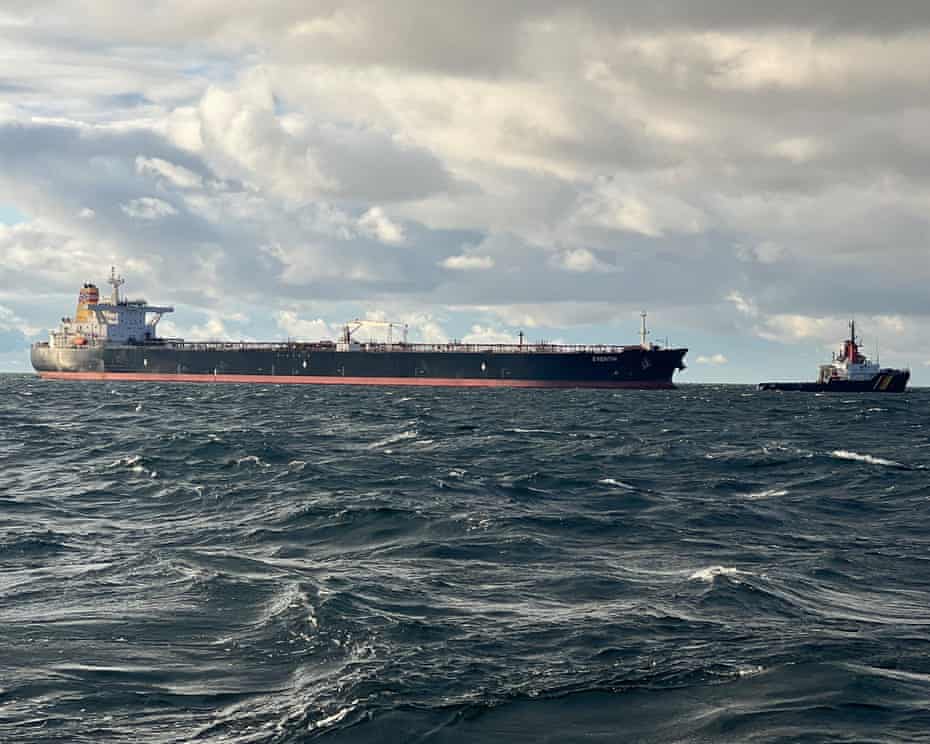European calls to crack down on Russia’s shadow fleet of unflagged oil tankers surged this weekend, just ahead of a pivotal EU foreign ministers meeting set for Monday. The meeting is expected to impose sanctions on 180 additional vessels, bringing the EU’s total to 350 ships, a decisive move in the ongoing economic pressure campaign against the Kremlin.
The shadow fleet, believed to consist of 500 to 700 ageing, poorly insured tankers, is accused of circumventing G7 sanctions imposed in 2022. These ships, many sailing under flags of convenience, are estimated to carry around 85% of Russia’s oil exports, funding nearly a third of the country’s war budget. Despite their central role in sustaining Moscow’s economy, enforcement remains patchy and legally fraught.
Over the weekend, Ukrainian President Volodymyr Zelenskyy spoke with Canadian Prime Minister Mark Carney to discuss tougher actions against the fleet. Yet concerns over enforcement are mounting, particularly in the Baltic region. Lithuanian Foreign Minister Kęstutis Budrys warned that current efforts are ineffective and risk provoking military retaliation from Russia.
“About three loaded shadow tankers a day are moving through northern European waters,” Budrys stated at the Lennart Meri Conference in Tallinn. “We’re facing both legal ambiguity and the rising threat of confrontation.”
The legal murkiness stems from the United Nations Convention on the Law of the Sea (UNCLOS), which offers limited grounds for interdicting ships in international waters. While the EU bans sanctioned vessels from its ports, extending that restriction to its exclusive economic zones could violate maritime law.
The simmering standoff escalated last week when Estonia’s navy intercepted a vessel named Jaguar, suspected of carrying Russian oil in violation of UK sanctions. Though Estonia refrained from boarding the unflagged ship due to legal uncertainty and resistance from the crew, tensions spiked when a Russian Sukhoi Su-35 jet briefly violated Estonian airspace, marking the first such incursion in over three years.
Estonian authorities believe the Jaguar could have posed a threat to underwater infrastructure and opted to escort the vessel out of their waters. The aerial response from Russia is seen as the first show of military force in defense of its shadow fleet, further intensifying regional anxiety.
Estonian Defence Minister Hanno Pevkur has called for expanded restrictions, including barring sanctioned ships from EU economic waters altogether. “It would be a strong move,” he admitted, “but one that might cross into illegal waters.”
Meanwhile, critics argue that enforcement efforts remain fragmented. Benjamin Hilgenstock of the Kyiv School of Economics argues the G7’s $60-per-barrel price cap is essentially toothless, with no system in place to verify actual oil prices. Anna Wieslander, Director for Northern Europe at the Atlantic Council, underlined the fleet’s importance to Russia’s war machine: “This isn’t a side hustle. The shadow fleet is the backbone of their wartime economy.”
NATO’s Baltic Sentry mission, launched in January to protect undersea infrastructure, has no jurisdiction over the fleet. Still, the alliance has taken steps, with Deputy Commander John Mead revealing that 1,800 vessels have been hailed to check their flag status. Drones are also being deployed to bolster surveillance.
“Russia can’t keep this up forever,” Mead said. “Escorting every shadow ship is an exhausting play.”
Budrys, however, insisted on urgent action. “We need to expand Baltic Sentry’s mission. Every passing day without a unified enforcement strategy increases the risk of military conflict in the Baltic Sea.”
Despite the existence of a 14 nation task force on the shadow fleet, coordination remains weak. Calls are growing for standardized proof thresholds for sanctions and joint intelligence-sharing mechanisms.
As Europe sharpens its stance, the shadow fleet is no longer just a maritime workaround, it’s becoming a flashpoint with far-reaching consequences.



